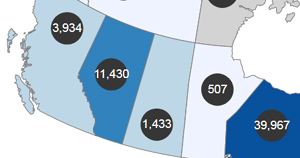Sunday August 9, 2020 ~ SOUTH VANCOUVER ISLAND
by Mary P Brooke, B.Sc., editor | West Shore Voice News
For over five months now, in BC and across Canada we’ve been hearing case counts and death tallies as to the impact of the COVID-19 coronavirus.
Most British Columbians have integrated the urgency of taking all appropriate precautions against COVID-19 spread and infection. Most of us are adhering to physical distancing, frequent hand washing, containing our lives within carefully assembled social bubbles, and remembering to stay away from others if we are even the least bit unwell.
Many of us have curtailed our summer travel plans and revisited the idea of staycations, as a way to curtail more possibility of spread. Most people wear face masks if they can’t maintain a 2-metre distance from others, especially in enclosed or confined spaces.
But the case counts are up:
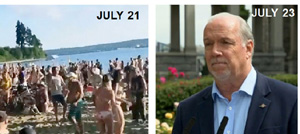
The case counts in BC have been trending upward this summer, however. Despite all the hard work by most people, businesses and communities to flatten the epidemiological curve, young people in particular have been out partying and taking part in gatherings with far too many people and/or lack of physical distancing.
The summer uptick in cases will have impacts on the economy (more workers will get sick) and make the return-to-school far more challenging in September.
Numbers in context might help:
A daily rolling count of cases and deaths due to COVID can become mind-numbing. And in BC we are now a bit spoiled (few cases and few deaths compared to elsewhere in the Canada and the rest of the world). But our flattened curve in BC may have contributed to a sense of complacency.
Here’s a stab at putting the COVID stats into a context that might shake up a few more partiers into taking physical distancing (and all the other COVID prevention methods) to the serious degree that is necessary for preventing or at least mitigating a second wave this fall and winter.
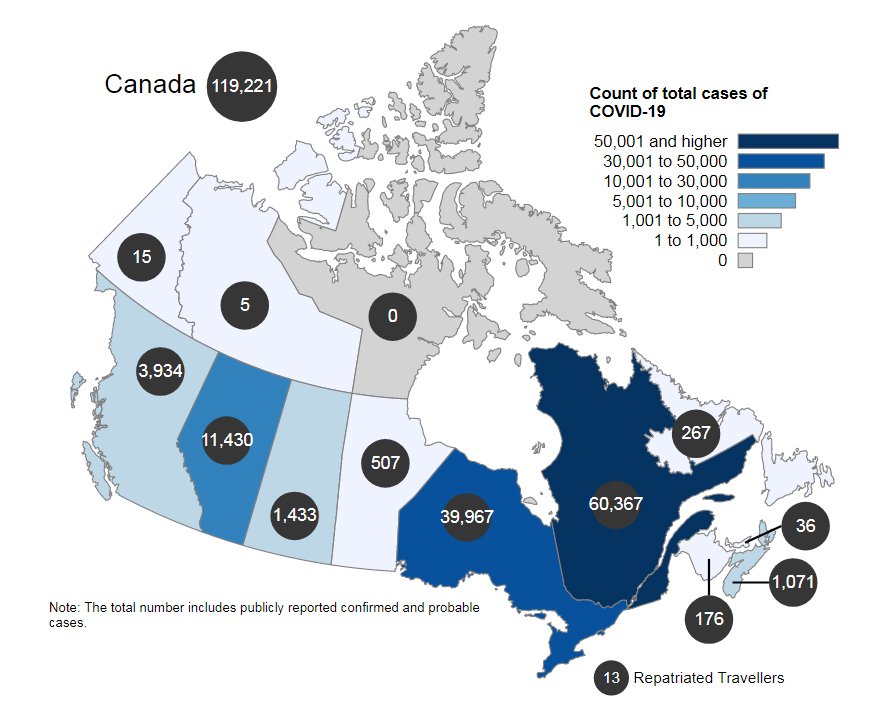
Canada (Public Health Agency of Canada) COVID stats at August 8: 119,221 cases and 8,976 deaths.
- The number of cases across Canada is almost equivalent to one-third of the current 412,465 population of the Capital Regional District or Greater Victoria (13 municipalities and three electoral areas), or about 65% of the total population of the west shore (76,884 in Langford, Colwood, Highlands, Metchosin and View Royal combined, in 2019). Imagine if 65% of the people in the west shore had COVID right now, or 100% of the people in Saanich (where the population is about 125,375). That’s some local context.
- Some epidemological context might include that in the 2019-2020 influenza season in Canada (i.e. last fall to this spring), there were 42,537 confirmed cases of flu, which is about one-third of the number of COVID cases so far. COVID is overreaching the flu by three-to-one.
- The number of deaths by COVID in Canada is almost 9,000 now. That about 98% more than the number of Canadian soldiers killed in Afghanistan (195 as of 2019). As one comparison in numerical context, 9,000 deaths is about 82% of the total student population of Sooke School District 62 (in the west shore), or 45% of the student population of Camosun College or the University of Victoria. A tally of 9,000 is the population of a fully-attended event at the Westhills Stadium (which seats 6,000), plus half again. “Ashes, ashes, we all fall down” – from a nursery rhyme that dates back to the great plague of London (1665-1666).
British Columbia (BC CDC / August 7): 3,934 cases of COVID-19 (53 new in 24 hours) and 195 deaths (no new deaths in seven days).
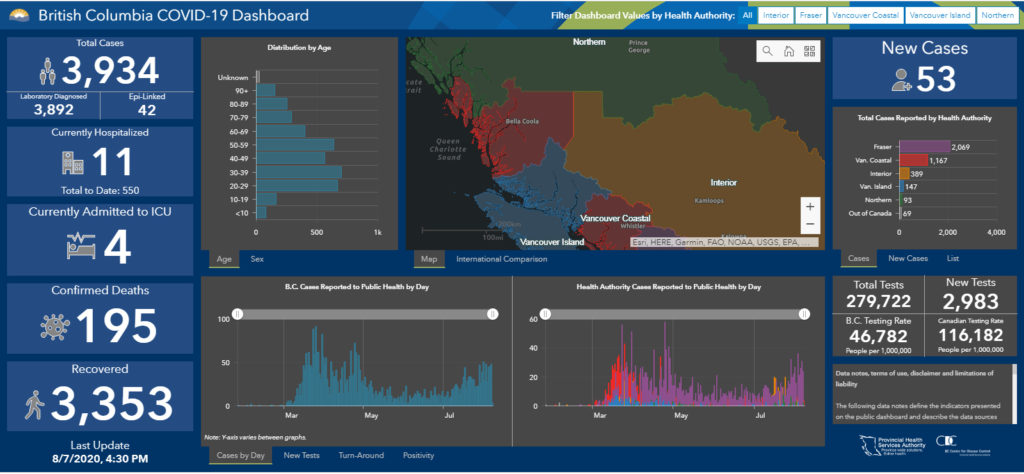
- The 3,934 cases for numerical context is the same as approximately the entire population of the Southern Gulf Islands, or about 77% of the Metchosin population or also about 77% of the Juan de Fuca area (East Sooke and west of Sooke) population.
- The 195 deaths by COVID in BC to date is the same number as deaths of Canadian soldiers in Afghanistan. Or about 16% of the student population of Belmont Secondary School in the west shore. Or maybe that number compares to the number of people who live on your block in your residential neighbourhood. The 195 count is about four full busloads of people (public transit or school buses), or a full plane load on a 737 jet.
Island bubble:
Vancouver Island has enjoyed — by natural luck — some of the worst exposure to the COVID-19 virus. The influx of cases has been almost entirely due to travel.
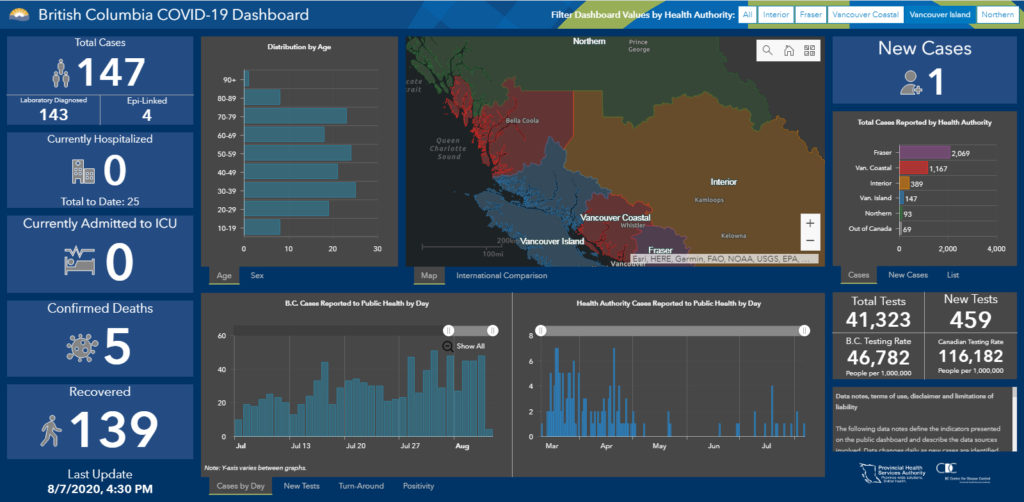
The case count at August 7 is 147, with only one new case in several days (a total of three new cases in August so far). No cases, thankfully, in children under age 10. But there have been eight cases (5.4%) in youth ages 10 to 19 here on Vancouver Island, 19 cases (13%) in the 20-29 age group, and 25 cases (17%) in adults age 30 to 39.
This is not a good time to become complacent. As BC Health officials remind us all, COVID does not discriminate. It will infect anyone it can get a hold of. And we’re told the most important factor in sending kids back to school in September is a low rate of infection in the general population.
Until there is a vaccine:

In just the past week or so there have been reports about one or two treatments (not cures) for COVID-19, and word of getting close to a vaccine (some now in clinical trials).
But essentially there is still zero protection for humans of all ages against COVID-19.
Getting the infection itself would be bad enough and feeling crappy or even ending up in hospital. But there are concomitant impacts such as the inability to work (producing potential financial instability) and the possibility of infecting family and household members (impacting ability to function as a family, or for people to go to work).
When there is a vaccine:
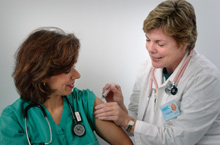
Even once the presumed vaccine is found, manufactured and distributed, it will not be administered to everyone all at once. Frontline emergency and health care workers and government leaders will probably receive the vaccine first, followed by sectors designated as essential.
Unlike in the regular flu season where seniors and children are given the vaccine most freely, a premium supply of COVID-19 vaccine may not reach seniors and children as readily as the working adult population that will be needed to keep the economy going.

===== LINKS:
Parents have angst about sending kids back to school during COVID – encouraged to contact school districts ahead of August 21 (August 6, 2020 – West Shore Voice News)
COVID-19 outbreak in Canada – stats and guidelines (Public Health Agency of Canada)
COVID-19 information in BC – stats and guidelines (BC Centre for Disease Control)
Return to School in September 2020: in-class learning document by the BC Governemnt, with learning group requirements. School districts are to announce their plans by August 26, 2020.



